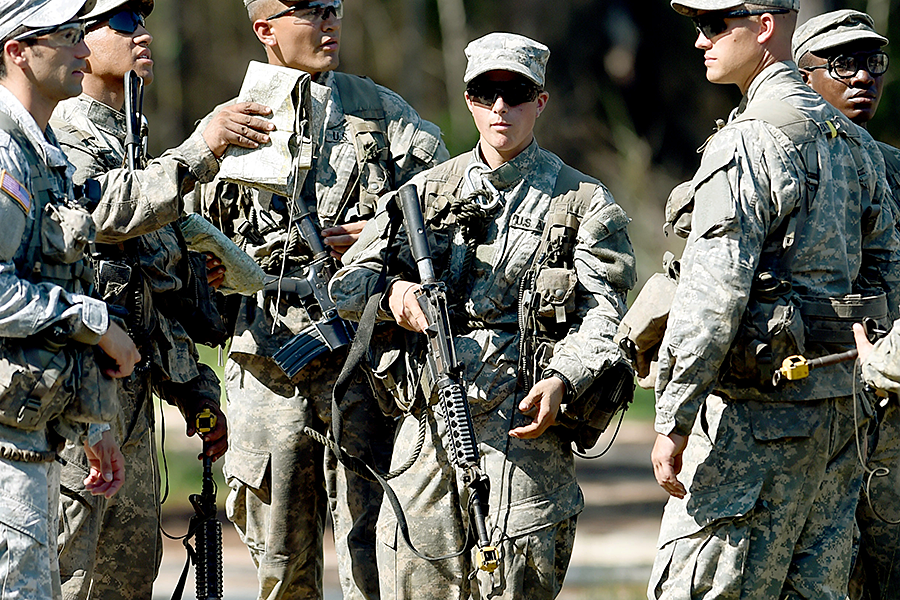Next milestone for military women: Navy on track to allow women into SEALs
Loading...
Accompanying the fanfare that has followed the news that for the first time ever two women have completed the grueling US Army Ranger School, the highest ranking Navy admiral has indicated the branch was preparing to allow women into the elite SEAL special forces teams.
In an interview with Defense News, Admiral Jon Greenert, who serves as the Chief of Naval Operations, said he and the head of Naval Special Warfare Command, Rear Adm. Brian Losey, believe that if women can pass the six-month Basic Underwater Demolition/SEAL training, they should be allowed to serve.
"Why shouldn't anybody who can meet these [standards] be accepted? And the answer is, there is no reason," Admiral Greenert told Defense News. "So we're on a track to say, 'Hey look, anybody who can meet the gender non-specific standards, then you can become a SEAL.'"
SEALs, an acronym for the Navy’s Sea, Air, Land teams, trace their roots back to World War II and serve as the Navy’s primary special operations force, often tasked with covert and dangerous missions abroad. Notable recent operations include the 2011 raid on Osama Bin Laden’s hideout in Abbottabad, Pakistan, which killed the Al Qaeda leader, as well as the rescue mission from Somali pirates dramatized in the film "Captain Phillips."
The admiral’s comments advances earlier statements made in May by the Secretary of the Navy Ray Mabus, who said that it would make sense to reexamine the standards for participation in the SEAL teams.
"First, we're going to make sure there are standards. Second, that they are gender-neutral, and third, that they have something to do with the job," he told the Navy Times.
Critics of the inclusion of women have questioned whether qualification standards would be changed to accommodate women, leading to less-elite fighters. But military leaders have increasingly moved toward gender neutral qualifications for positions. In the case of Ranger School, for example, the female soldiers were expected to meet the same standards as the men. In that instance, while the two women have earned their Ranger tab, they will not yet be allowed to serve in the elite regiment.
The SEAL training course is known for being especially brutal. In addition to combat and logistics training, the regimen includes cold-water surf torture and “drown-proofing,” in which aspiring SEALs are required to swim and float with both their hands and feet bound. The dropout rate for the program is often more than 80 percent.
The comments by the Navy officials are in line with a general progression toward allowing women in various military roles. In 2013 the Pentagon officially lifted the ban on women serving in the military in combat roles and charged the branches with examining how to open doors for gender integration.
Top Pentagon officials gave the branches a deadline of January 2016 to incorporate women in combat positions.
Former special operations officer Elliot Ackerman made the case in The Atlantic that a good place to start gender integration would be in special forces units – like the SEALs – pointing to the significant roles women already play in special operations and the ability of women in those units to change the perceptions of the larger military culture.
"If the military were to integrate elite formations such as the SEALs, Marine Special Operations and Army Special Forces, a few highly capable women in those communities would provide cultural proof that females can hang with 'the toughest of the tough,' " he wrote.







